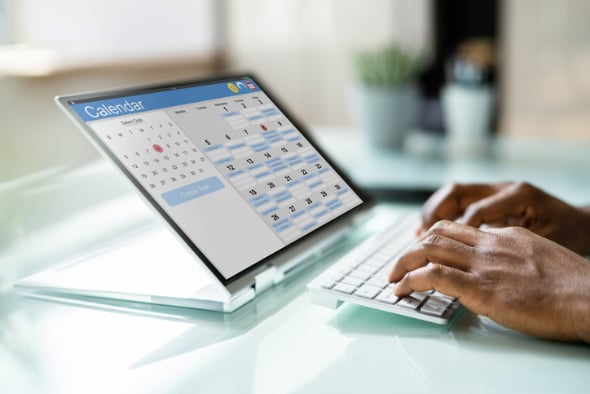What is seasonal pricing?
Seasonal pricing is a revenue strategy that hotels use to set different room rates during particular periods of time throughout the year.
For example, your property may be located in a ski town. This will create high demand in the winter months and allow you to set higher than normal rates.
Seasonal pricing is a vital part of delivering profit for your accommodation business, given how much rates can fluctuate between periods of high and low demand.
Seasonal prices have been utilised by hotels as a pricing technique for years and is also popular with online travel agencies (OTAs), which like to promote seasonal deals.
Complete pricing clarity revealed in clicks
Check rates across all your listings, compare them with competitors in real time, and access to the information you need to craft an unbeatable pricing strategy.
Learn moreSeasonal demand examples
The term ‘seasonal’ can mean different things to different hotels, which can affect how you approach the development of your seasonal pricing strategy.
For some hotels, like the ski town example mentioned above, the seasons are clearly defined, and more or less follow the four seasons of the year. Winter is peak season (with a higher seasonal price), early spring and late autumn are shoulder seasons, and the rest of the year, generally speaking, is low season.
But seasonal demand can look very different for other hotels. If a destination is popular due to festivals and events, ‘seasonal’ demand might be highest whenever these events happen to be most concentrated.
If a hotel attracts families, demand can have less to do with the destination than the guests – in this case seasonal demand will tend to spike during the school breaks throughout the year.
If these seasonal demand examples are only confusing matters, don’t fret. This blog will give you a full understanding of what seasonal pricing is, the benefits for your property, and how to set them up for maximum return.
What are the benefits of seasonal pricing?
Seasonal pricing can benefit your property at all times of year; not just in the peak season.
The perks of setting seasonal pricing include:
- Gaining an edge over your closest competitors
- Maximising your revenue and profit
- Helping you gain direct bookings
- Increasing occupancy during quieter periods
- Creating deals that increase occupancy and boost loyalty
By updating your pricing at different times of the year, you’ll be able to ensure your occupancy and revenue figures are as optimal as they can be.

How to develop your hotel’s seasonal pricing strategy
Before you can be confident your seasonal pricing are optimised, there are a few simple things you need to do first:
1. Define your property’s seasons
You should already have a pretty good idea of how busy your property is at different times of year but it can be a good idea to look at past performance.
For some, the high and low seasons may change with the literal seasons such as summer and winter. For others, seasons may revolve around particular events such as festivals, sporting events, or global calendar events like Valentine’s Day or Halloween.
Generally, properties operate by looking at peak season, low season, and shoulder season. Shoulder season is the time immediately before and after your peak season.
All successful businesses rely on collecting and analysing data to track performance. Your property needs to choose which key indicators to focus on to make more informed decisions, especially when it comes to your seasonal pricing.
Three success metrics you absolutely must use are:
Average daily rate (ADR)
This is a measure of your average income of occupied rooms during a specific time period. It allows you to know the average price a guest pays per room at your property.
Tracking this means you can compare revenue performance between months, seasons, or years to see when you need to improve.
Occupancy rate
Healthy occupancy rates are crucial to ensuring your property stays successful. While you may not always want your hotel or B&B at capacity, the higher your occupancy rate the better.
If a room is sitting empty for the night, you quickly lose revenue and you miss an opportunity to continue to grow your business. This is especially true for a seasonal business, which needs to capitalise through seasonal pricing on periods of high demand or risk failure.
If your occupancy rate isn’t climbing like it should even when you’re tapping into high demand periods and events, take the time to audit your booking channels:
- Are you connected to enough channels?
- Do some perform better than others?
- Can you identify the reasons why and devise strategies?
Revenue per available room (RevPAR)
This metric has long been considered one of the most important figures to look at when it comes to seasonal pricing.
The most popular way to calculate it is to multiply your average daily rate (ADR) with occupancy. You will calculate your RevPAR according to a specific point in time (day, month, or year), and compare it across the same time periods (for example, RevPAR across weekends or holidays).
To help increase these metrics you could play with minimum and maximum length of stay restrictions, adding new room types and attributes, and enhancing your offerings with additional perks.
2. Establish your base rate
Your base rate is the minimum you’re willing to charge for your rooms, and will typically be used anytime you aren’t applying seasonal rates.
How you come to your base rate will depend on a few factors including:
- Your competitors and how you stack up against them
- What your competitors actually charge
- Your costs and expenses
- How much profit you want to aim for
3. Set your seasonal price
Once you have your base rate and seasons set out you can set your seasonal price mark-ups, create packages, and develop promotions to maximise profit in every season.
It’s ideal to set your seasonal rates at least 12 months in advance to avoid anyone booking your base rate during what would be your high season.
This should be done on all the third-party channels you are connected to, as well as on your own website and booking engine.
Need help preparing your property for the peak season? Read our full guide.
4. Use ancillary revenue to drive more profit
Ancillary revenue is revenue generated by additional products and services that are offered at your hotel. It’s useful because you can increase the revenue generated per customer without consistently raising room rates.
Here’s a few hotel revenue ideas to consider:
- Display local artwork and sell it to guests
- Create experiences that are available for purchase at your property
- Offer upgrades that may enhance the guest experience
- Make products used at your property available for purchase
- Partner with other local businesses to offer classes, shows, or services
Ancillary revenue can be a much better way to increase your profits without needing to hike up your room prices all the time.
5. Leverage extended length stays
Guests who are looking to stay for longer than seven to 14 days would be considered extended stay guests, and you can market specific products and amenities to motivate them to book with you.
These types of guests are highly valuable, because you can safely guarantee revenue for a significant period of time.
There’s other advantages for guests too, like being able to secure a larger room with more amenities at an affordable seasonal price.
Extended stay rooms are priced differently than traditional rooms, which makes it more realistic to stay in one place for several weeks or months at a time.
Guests benefit from the atmosphere at small hotels too, where they can feel comfortable and get to know the people around them.
6. Report on seasonal pricing performance
It’s one thing to understand and record revenue metrics to help with seasonal pricing, but it’s another to make sure you’re regularly reporting your findings and results to ensure you can maintain success.
Frequent reporting will help you feel more in control of your operations – though managing revenue and optimising profit is a job that’s never fully complete.
There are a variety of reports property owners and managers should run on a regular basis, including the transactions report, the booking channels report and the statistics report.
However, it’s challenging to manually generate these reports on a consistent basis, which is why it is necessary for operators to invest in the right property management technology.
Selecting an all-in-one business solution will provide you with access to these reports along with many other valuable tools.
Seasonal pricing examples
The rates you set for each season at your property will be completely up to you, however in general it’s good practice to set some standard price increases.
For example, you might intend your high season rate to be 300% that of your low season rate, with your shoulder season somewhere in between at 200%.
So if your property’s base rate is $110/night:
- High season rates = $330
- Shoulder season rates = $220
You have the flexibility of deciding how long each season runs for at your property, and playing with packages and add-ons to maximise bookings at the best possible rate you think you can achieve.
By Shine Colcol
Shine is the SEO and Content Manager of Little Hotelier, the all-in-one software solution purpose-built to make the lives of small accommodation providers easier. With more than five years of experience and expertise in content strategy, creation, and management, Shine has produced informational content across various topics, mostly around improving daily operations and increasing business metrics. She aims to share well-researched articles in hopes of helping bed and breakfast owner-operators win more bookings and gain more control of their small property.
Table of contents
“I'm in love with the new app because it's very simple to use! I had to rely on someone calling me, but now it's as simple as using the desktop software.”
Owner, Athelstane House








